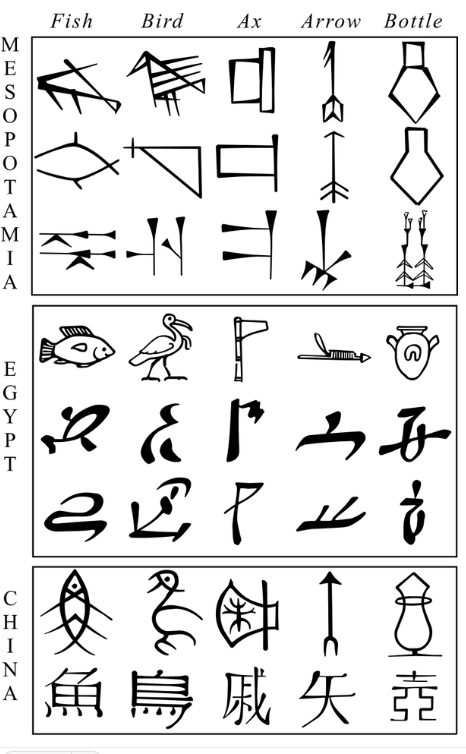Eh… no, not really. At least not anymore lol.
Modern Chinese characters are not particularly effective at conveying meaning through visual representation, but ancient Chinese characters more closely resembled what they meant, with this resemblance becoming stronger the further back you go. Writing was independently invented only three to four times in human history: in Mesopotamia, Egypt (though some debate whether it was inspired by Mesopotamia), China, and Mesoamerica (likely by the Olmecs).
All of these early writing systems were logographic, meaning they used symbols to represent words or morphemes rather than individual sounds. Each system originated from pictographic proto-writing, where symbols initially took the form of images that directly represented physical objects. Over time, ideographs were introduced, allowing symbols to convey more abstract ideas. While a pictogram is a direct visual representation of an object (like ☀ for “sun”), an ideogram represents a concept rather than a physical thing (like 1 representing the idea of a number rather than a specific object). The symbols came to represent increasingly complex elements, such as the grammatical and phonetic aspects of language. They could also be combined in new ways to express entirely different meanings.
Paradoxically, as writing systems became more intricate in what they could convey, their symbols were gradually simplified to make them faster and more efficient to write. Over time, these systems evolved to fully represent their respective spoken languages, marking the transition from proto-writing to true writing. Logographic writing was the first writing system ever developed and was the only one in existence for a long time, but now it is the rarest among the major writing system types. Chinese is the only purely logographic script that remains in common use today. However, because many Chinese languages have a huge number of speakers, logographic writing—despite being incredibly rare among the world’s languages—probably doesn’t feel rare.
You can see how the Mesopotamian, Egyptian, and Chinese scripts were initially more representational but became increasingly abstract over time.
